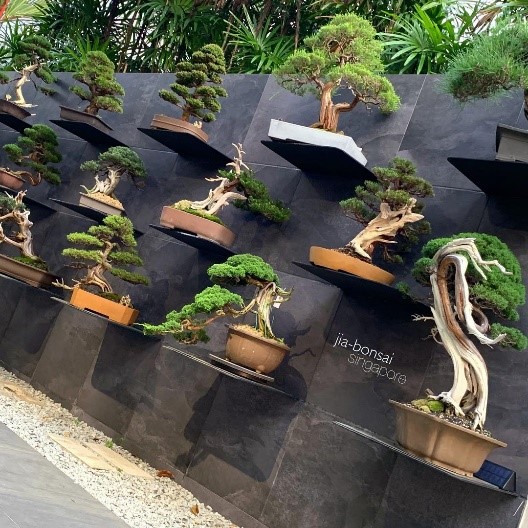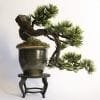Have you been thinking about bonsai lately?
So, you’ve finally decided to get one but the price bothers you?
I know, I know…
Let’s not waste your precious time and jump right into it!
Why Bonsai Trees Are Expensive
The cost is one factor that can deter you from entering the bonsai world. It’s a common misconception that bonsai trees are quite expensive, but this is often not the case, especially when just getting started.
Why do some bonsai trees cost so much? Usually, the answer comes down to rarity and quality. Extremely expensive bonsai trees can be purchased if they are of great quality and rarity. But it’s important to draw a distinction between the few exceptional trees and the more common bonsai, which are readily accessible and reasonably priced.
The idea that bonsai trees are insanely expensive is one of the countless myths surrounding them. While there are instances where this is true, it may be argued that the majority of the time it is not. In this article, we’ll examine what gives a bonsai tree value and how they might grow in price over time in various ways.
The Bonsai Trees’ Real Value
The first point to be recognized is that bonsai trees’ actual worth is not only measured by their monetary value but also by the knowledge and skills that may be gained from caring for them. The discipline of maintaining bonsai trees teaches you many vital principles that are applicable in all aspects of life, which is one of the key reasons why it has endured for more than a thousand years and expanded to every corner of the world.
Every observer may learn the basics of bonsai, which emphasizes the harmony and balance that exist between the natural world and how we interact with it. It can help us learn to respect others’ needs and foster a deep sense of empathy for both the environment and other people.
Bonsai can serve as living proof that hard work and determination can yield rewards that far outweigh the initial investment for individuals who have been practicing the craft for a long time. By taking care of your bonsai, you can also cultivate positive behaviors and traits like compassion, unwavering care, and many other traits that are predecessors to parenthood. One of the most inspiring experiences a person can have is learning the mysteries and understanding of the natural world.
The practice of bonsai can foster traits of pride and assurance while also encouraging humility and selflessness. Together, what you give it and what you get from it make up the bonsai’s true worth to you.
Perceived Value
Of course, there are many different ways to measure value, so it can be useful to lay out a framework of what is widely accepted to increase the worth of a bonsai tree. Here, we make an effort to break down a few qualities that are frequently regarded as desirable in the bonsai community.
Appearance
Given that bonsai is an artistic discipline, appearance is probably the most significant factor. A bonsai tree can be made in a variety of methods, and there are numerous characteristics that make it stand out as remarkable. Naturally, there is a subjective component to all visual art, and that’s exactly what makes it so fascinating. When there is a shared understanding of what is beautiful, it unites people. Within the broad parameters of what constitutes a bonsai, creativity and originality are the real qualities that many bonsai artists want to achieve. The tree must be a scaled-down illustration of the natural environment and must not in any way appear forced.
Age
This characteristic of a bonsai tree may be a little deceiving. In general, the older a bonsai tree appears to the viewer, the more beautiful it is thought to be. However, this does not automatically imply that older trees are better or even more attractive. The most sought-after and challenging feature among bonsai masters is a young tree that has the appearance of age. Because it suggests a profound wisdom in the tree’s nature and makes the tree more interesting and engaging to look at, this quality is highly coveted. That being said, the tree gains greater value in the eyes of the viewer.
Size
Generally speaking, a bonsai tree should be small, but occasionally there are really large bonsai trees that defy this norm and are consequently valued higher. The same is true for very small bonsai, which are extremely challenging to cultivate to such precise limits. Trees can be divided into different categories according to their sizes, with Imperial being the largest and Shito or Keshitsubo being the smallest. However, with bonsai, there aren’t any strict guidelines and there aren’t really any upper or lower size limits. Simply because they are more spectacular and there is more to take in, among the most expensive bonsai are those on the larger side.
Color
The color scheme chosen by the artist also contributes to the aesthetics of a bonsai tree. Contingent on their species and environment, trees can display a nearly unlimited variety of colors in the natural world. This is also true for bonsai trees; the bonsai artist has a wide range of alternatives and should not limit themselves to a single arrangement. Within a few weeks, the seasons can transform a tree’s appearance from a bright green to a cozy hug of orange and yellow. This can have a significant impact on how attractive a tree is seen when combined with other characteristics, especially if the proportions of the leaves, bark, and pot are taken into account.
Presentation
There are several things you can do to help improve the greatest qualities of a bonsai tree, and its surroundings can have an impact on how it is perceived. The first of these is selecting the right bonsai pot. It should have an appealing size and shape and go well with any tree accent colors. Working together with the plant to become a single entity is the concept. Placing a tree on a stand to give it depth is another way to alter its appearance. The options for construction and look are essentially unlimited, varying mostly from classic to highly modern, and this can be a very personal choice.
Bonsai as an Art of Nature
One of the most important classic themes in human history is about overcoming adversity, and it has a place in the bonsai world as well. Whether the difficulty is characterized by the species, circumstances, damage, or merely old age, they lend depth to the significance of the tree and the story it portrays. All these things add up to the value of a bonsai tree that not everyone can understand.
So, now that we’ve rolled out the reasons as to why bonsai trees are so valuable, I hope that you’ll never question their worth because nature is undoubtedly working at its best.
Visit our shop now and help them!


